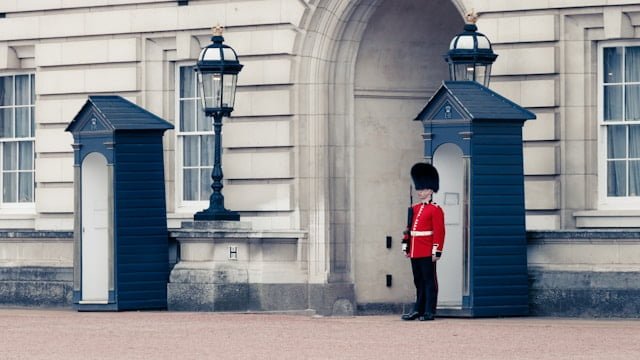Nestled in the heart of central London, the Winfield House London stands as an exceptional ambassador’s residence, a testament to the enduring diplomatic ties between the United States and the United Kingdom. This neo-Georgian town house containing numerous features, once owned by the illustrious Barbara Hutton, has become an iconic landmark, weaving together threads of history, architecture, and international relations.
Exploring the Origins: The Story of Winfield House London
So, you wanna dive into the backstory of Winfield House London? This place isn’t just some fancy residence; it’s got a tale to tell. Nestled in Regent’s Park, Winfield House London is more than its lush gardens and elegant rooms. It’s about history, diplomacy, and a bit of mystery thrown in. Who wouldn’t want to uncover the secrets of this iconic spot?
The heirloom of Barbara Hutton and its transformation into Winfield House
In the early 20th century, the heiress Barbara Hutton, granddaughter of the founder of the Woolworth retail empire, Frank Winfield Woolworth, acquired a spacious property in Regent’s Park. Little did she know that this grand residence, initially called Hertford Villa, would eventually become the official residence of the United States ambassador to the Court of St. James’s.
Architectural marvels: From Hertford Villa to a neo-Georgian masterpiece
The villa was built in the early 19th century and designed by the 25-year-old architect Decimus Burton in the Neo-Georgian style, deriving a certain grandeur from its hexastyle portico. However, the true transformation occurred when Barbara Hutton donated the house to the U.S. government in 1948, paving the way for its metamorphosis into the Winfield House.
Key historical milestones of Winfield House since its establishment
Since its establishment as the official residence of the american ambassador in 1955, Winfield House has witnessed numerous historical moments, hosting dignitaries, cultural events, and diplomatic gatherings. From the visits of Princes William and Harry to the iconic “tent room” installed by the 3rd Marquess of Hertford, the house’s history is woven into the fabric of U.S.-UK relations.
The Legacy of Barbara Hutton: The American Heiress Behind Winfield House

So, here’s the scoop on Barbara Hutton, that American heiress with more money than sense, maybe. But one cool thing she did, she ended up behind the iconic Winfield House London. Not your average backyard, right?
This place is not just any house, it’s Winfield House London, folks. Imagine having so much dough you can splash out on a mansion that ends up as the U.S. Ambassador’s pad. Hutton’s legacy? Pretty much living every kid’s dream of owning a castle, but in London.
The Woolworth fortune and Barbara’s inheritance
Born into wealth and privilege, Barbara Hutton inherited a substantial fortune from her grandfather Frank Winfield Woolworth, the founder of the famous retail chain. This inheritance not only afforded her a lavish lifestyle but also enabled her to make a lasting impact on the diplomatic landscape.
Barbara Hutton’s contribution to Winfield House and her philanthropic endeavors
In a generous and patriotic offer, Barbara Hutton donated her London house to the U.S. government, ensuring it would serve as the residence of the united states ambassador. Her philanthropic spirit extended beyond this grand gesture, as she supported various charitable causes throughout her life.
High society and celebrity connections: From Cary Grant to Queen Elizabeth
Barbara Hutton’s life-size figures moved in the highest echelons of society, rubbing shoulders with Hollywood stars like Cary Grant and even Queen Elizabeth I. Her connections and influence further solidified Winfield House’s place as a hub for diplomatic and cultural exchanges.
Winfield House as the Official Residence: Its Role and Residents Through the Years
Winfield House has been the US Ambassador’s official pad in London since 1955, but let’s rewind. Originally, it was the fancy digs of Barbara Hutton, heiress extraordinaire, who named after her grandfather. She sold the house to the US, but not before the tent room the marquess installed had seen some epic parties. Imagine the tales if those floor plans could talk!

During WWII, the place got a new gig as an air crew reception center, courtesy of its spacious garden parked on the lawn. That’s right, it was used by an RAF squadron for a bit! Post-war, the style and deriving a certain charm, the house burton had rescued got a complete makeover. They completely rebuilt st and all, turning it back into a swanky residence.
The link to ol’ Blighty’s history didn’t end there. It had a connection to Francis Seymour-Conway, showing the blend of UK and US relations. Over the years, Winfield House has morphed: from the street and he now gave parties vibe to a more distinguished role. Plus, that tent room the marquess installed? Totally revamped. But, not everything stayed, some of the wilder bits, the hours has since been returned to a more formal elegance.
The significance of Winfield House as the U.S Ambassador’s residence
Since its establishment, Winfield House has served as the official residence of the ambassador, hosting numerous diplomatic events and fostering strong ties between the United States and the United Kingdom. Its strategic location in Regent’s Park and its grandeur have made it an iconic symbol of American presence in London.
Noteworthy ambassadors and diplomatic events hosted at Winfield House
Over the years, Winfield House has welcomed several notable ambassadors, each leaving their mark on the diplomatic landscape. From the tenure of John Hay Whitney to the hosting of the Quadripartite Talks on Berlin, the house has been a stage for pivotal moments in international relations.
Modernizing diplomatic relations: The house in the context of U.S.-UK ties
As the diplomatic landscape evolves, Winfield House remains a steadfast symbol of the enduring partnership between the United States and the United Kingdom. It continues to play a crucial role in fostering open dialogue, cultural exchange, and strengthening the bonds between these two great nations.
Architectural and Artistic Highlights of Winfield House
So, let’s chat about the history of Winfield House, a pretty swanky spot with a story to tell. Originally, this place was a banging notable neo-georgian town house containing all sorts of cool stuff, think tent room the marquess installed—yeah, fancy, right? And oh, the drama! After changing a few hands, the house on the site designed by Decimus Burton went through some major makeovers. Leonard Rome Guthrie, one important dude in its history, sold the joint, resulting in numerous changes to the house.
Now, flash forward, and the house to the American peeps becomes a significant spot. Since 1955, it’s been serving as a grand residence and as a notable house of sorts, spacious enough to throw some lavish parties. The whole vibe of the place got a facelift when William Haines and Lord Rothermere stepped in, sprinkling their magic and making it even more posh. Imagine that, a house where Queen Elizabeth I used to hang, now decked out with villas and a zoo. Yep, you heard that right, a zoo!
Before all this jazz, the estate’s storyline had more twists than a soap opera. After it was sold, the place went through a complete transformation. It got returned to a completely rebuilt state, all while maintaining its historic charm. The person behind this was none other than Leonard Rome Guthrie, making sure not to erase its past but rather enhance its present. Talk about giving a place more lives than a cat!
Neo-Georgian elegance: The architectural style of Winfield House
Winfield House is a stunning example of Neo-Georgian architecture, with its symmetrical façade, hexastyle portico, and grand entrance. The meticulous attention to detail and the harmonious blend of classical and contemporary elements create an aura of timeless elegance.
Artistic treasures within: Exploring the house’s interior and collections
Step inside Winfield House, and you’ll be greeted by a treasure trove of artistic and historical artifacts. From the clock with Gog and Magog striking the hours to the lavish interiors adorned with exquisite furnishings, the house is a true masterpiece.
The enchanting gardens and grounds of Winfield House
Beyond the house’s stately facade, the gardens and grounds of Winfield House offer a serene escape. Meticulously manicured lawns, vibrant flower beds, and towering trees create a tranquil oasis in the heart of the city, inviting visitors to unwind and appreciate the beauty of nature.
Public Engagement and Legacy: Winfield House beyond Diplomacy
So, there’s this fab place, the historic Winfield House, right? Nestled in London’s Regent’s Park, this notable neo-Georgian town house is more than just the US ambassador’s residence. Built on the site where the Marquess of Hertford and designed by the legendary John Nash, it’s not just a building; it’s a legacy. After the original house was demolished, Rothermere decided to rebuild this stunning house in Regent’s Park, turning it into the grand Winfield House in Regent’s Park we gawk at.
Back in the day, Rothermere was the first to use the house, creating a space that’s seen its fair share of history. Fast forward, and the US ambassador now calls it home, making it the official ambassador’s residence in London. But it’s not just about the diplomacy; it’s the house and grounds that give off major vibes. With parts of the estate being actually two buildings connected by a single-storied tent room, it’s like history and luxury had a baby. Plus, the front of the house is just show-stopping. It’s a peak into a past where the clock from a demolished St. church in Fleet Street, gifted by Rothermere, striking the hours, has since added to the charm and mystery.
Cultural and charitable events hosted by Winfield House

While Winfield House London primarily serves as a diplomatic residence, it has also opened its doors to host cultural and charitable events, fostering connections with the local community. From art exhibitions to fundraising galas, the house has become a hub for promoting cultural exchange and supporting noble causes.
Outreach and education: Winfield House’s role in public diplomacy
In addition to its diplomatic functions, Winfield House London plays a pivotal role in public diplomacy, offering virtual tours and educational programs to engage the public and promote a deeper understanding of U.S.-UK relations. These initiatives aim to bridge cultural divides and foster mutual respect and appreciation.
Preserving history: Conservation efforts and public tours
To ensure that Winfield House London remains a cherished landmark for generations to come, historic England and other organizations have undertaken conservation efforts to preserve its architectural integrity. Limited public tours are also offered, allowing visitors to witness the grandeur of this exceptional ambassador’s residence firsthand.
FAQs
What is Winfield House in The Diplomat?
In the TV series “The Diplomat,” Winfield House is depicted as the official residence of the american ambassador to the United Kingdom, serving as a backdrop for political intrigue and diplomatic negotiations.
Do the Americans own Winfield House?
Yes, Winfield House is one of the properties owned by the U.S. government in London, having been donated by Barbara Hutton in 1948.
Where does the US president stay in London?
During official visits to London, the US president typically stays at either Buckingham Palace or the InterContinental Hotel on Park Lane, depending on the nature of the visit and security considerations.
Did Barbara Hutton live in London?
Yes, Barbara Hutton, the wealthy American heiress, lived in London for several years, residing at the Winfield House (then known as Hertford Villa) before generously donating it to the U.S. government.


